Abstract
From in-vitro studies of breast and cow's milk preparations, and of the faeces from breast-fed and bottle-fed infants, a number of factors seemed likely to influence the production and maintenance of a lactobacillary flora and low pH in the faeces of newborn infants. These were mainly attributable to the nature of the feed. It is suggested that responsible factors in breast milk include its high lactose, low protein, low phosphate content, together with its poor buffering capacity. Importance is also attached to the fact that breast milk seems to provide a fluid feed of small bulk and low residue, and that its use is unlikely to include periods of starvation. Cow's milk, on the other hand, which has a low lactose, high protein, high phosphate content, and a high buffering capacity, is a relatively bulky, high-residue feed. Feeding regimens which employ it are likely to include periods of starvation.
Full text
PDF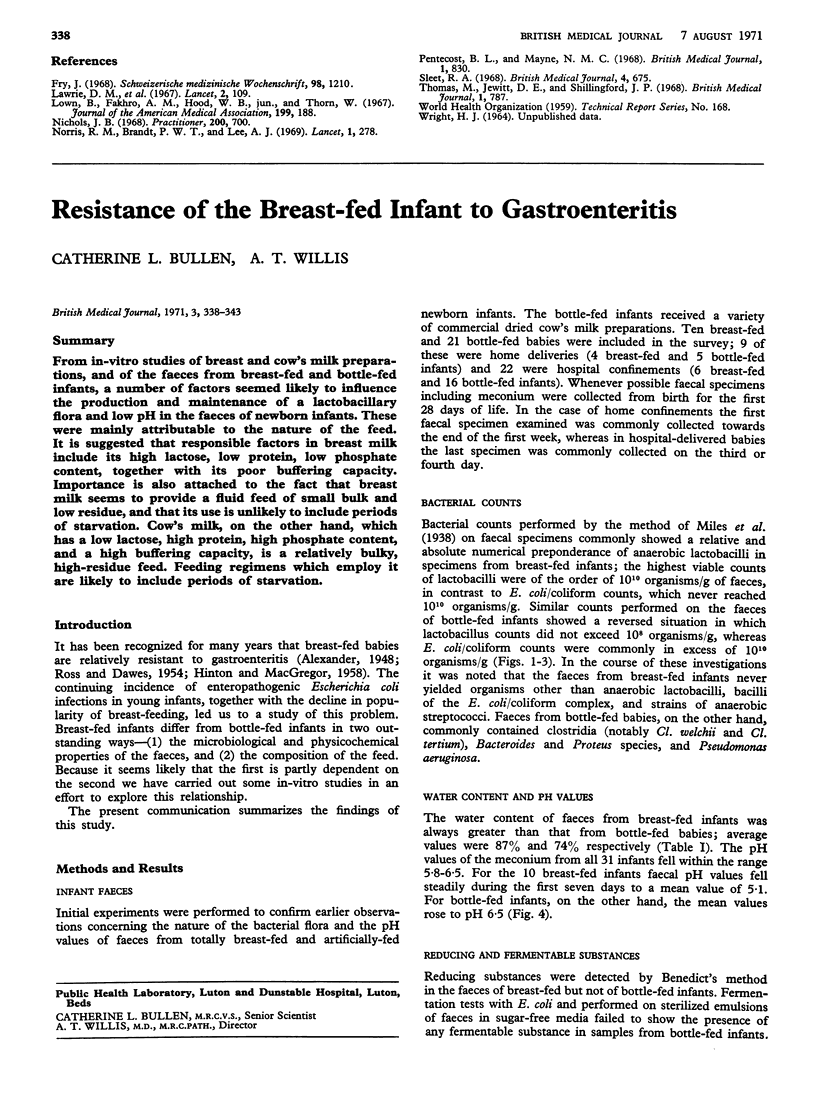
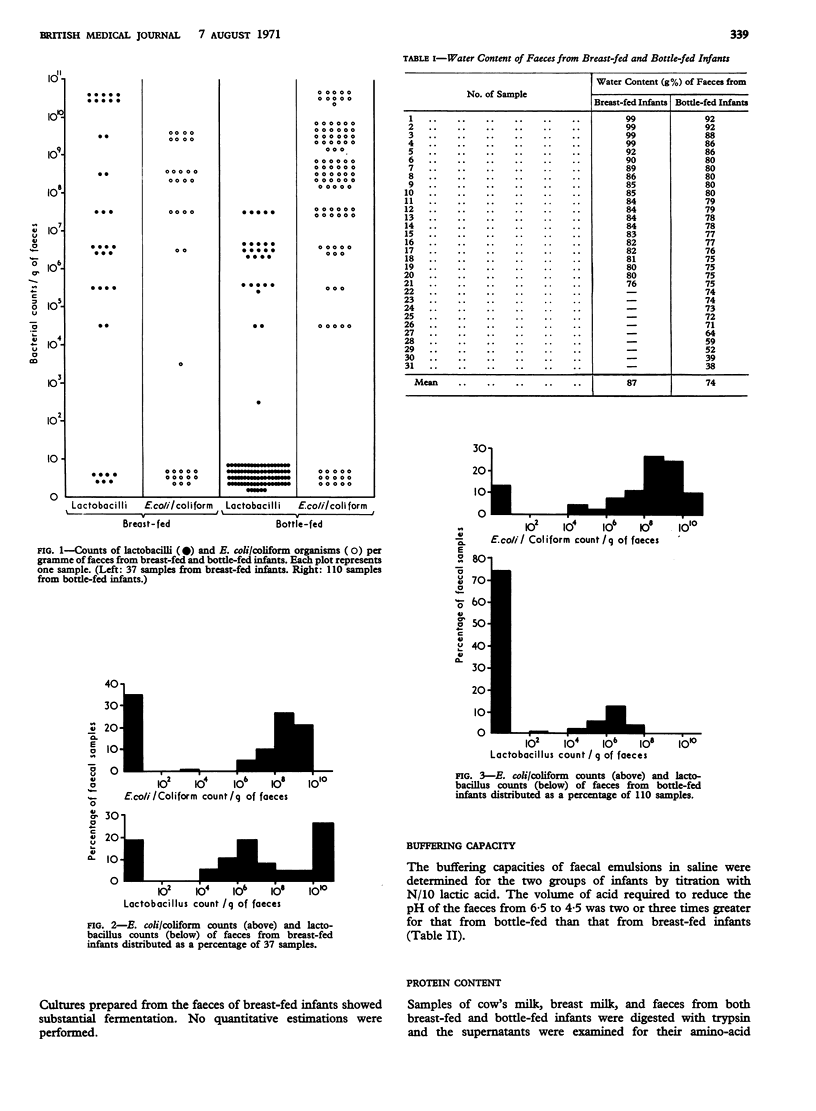
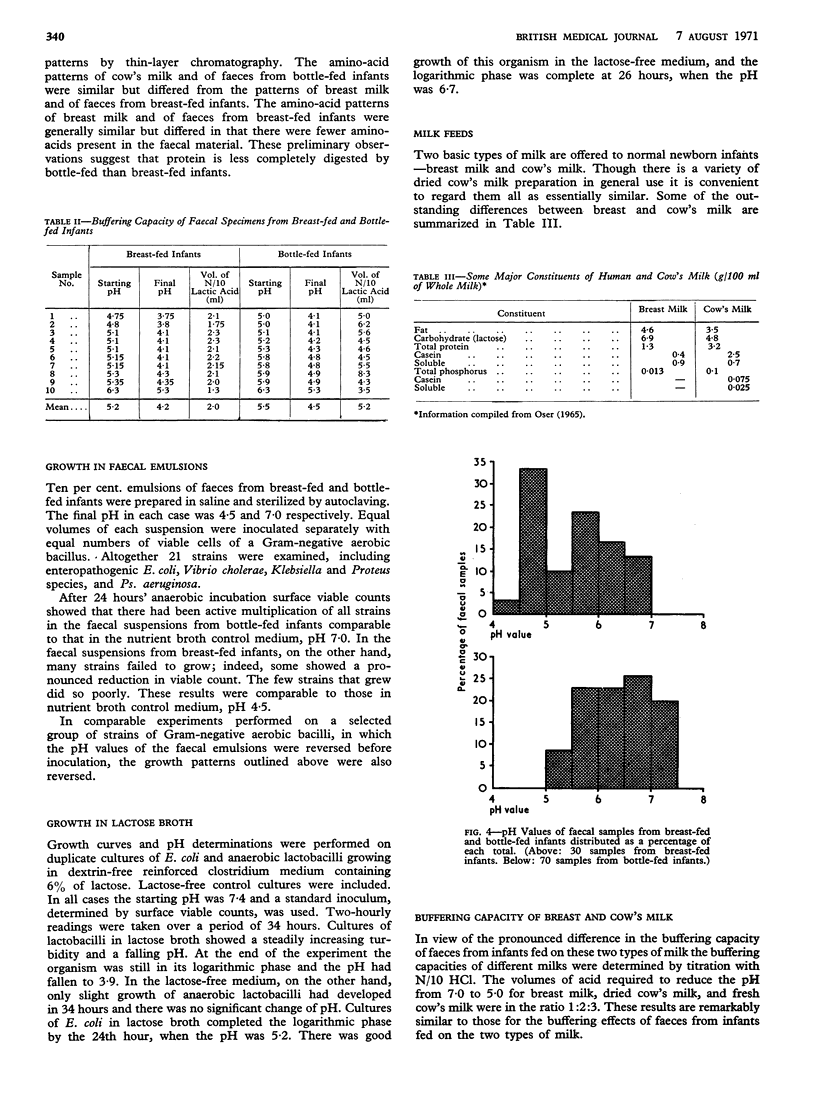
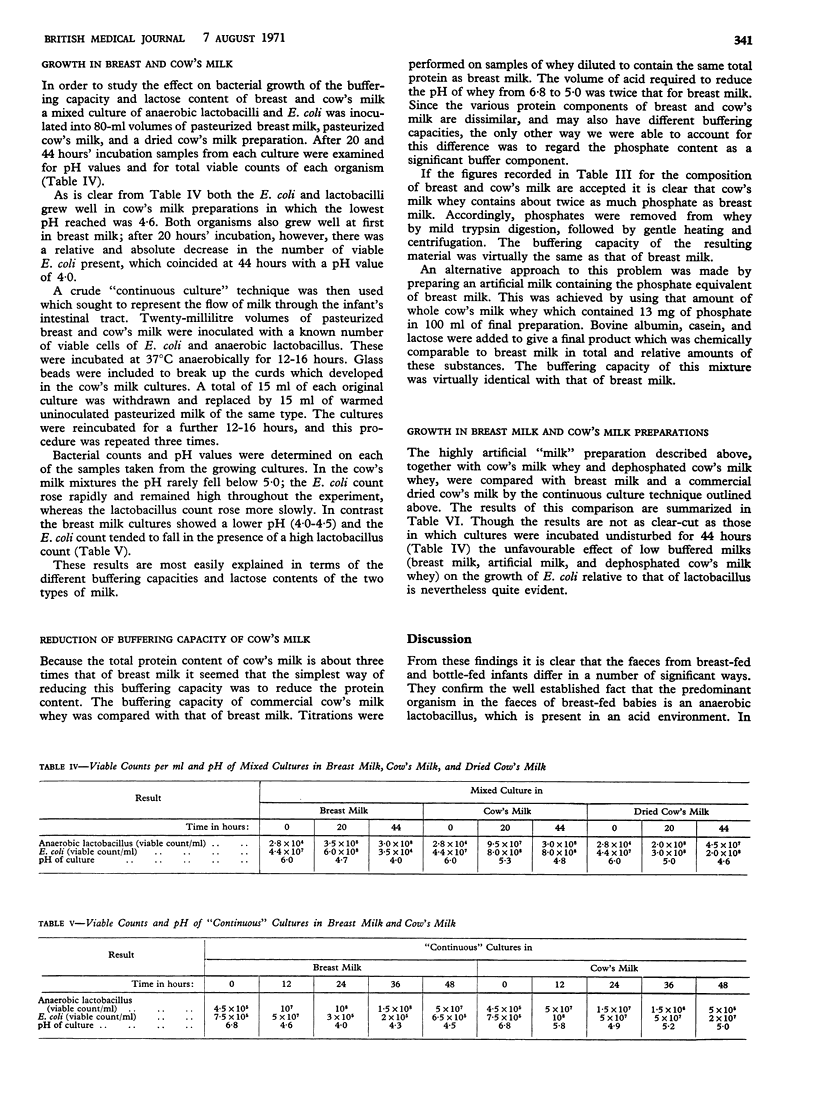
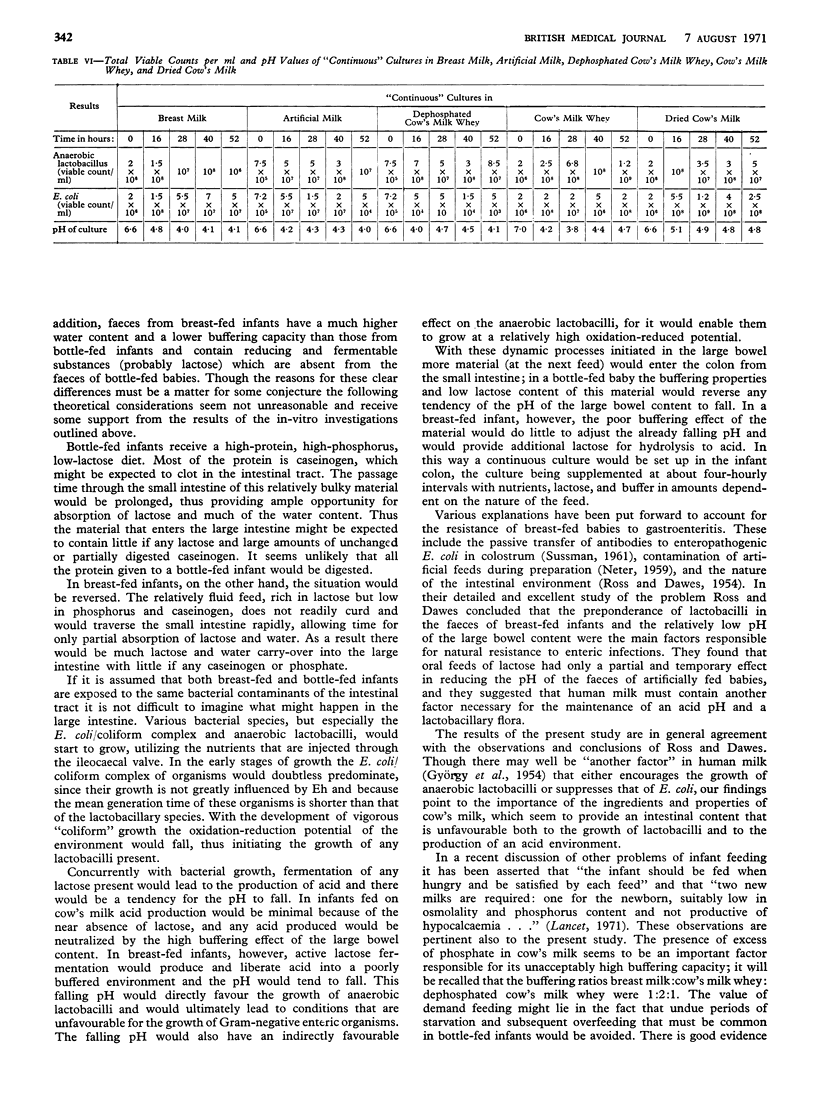
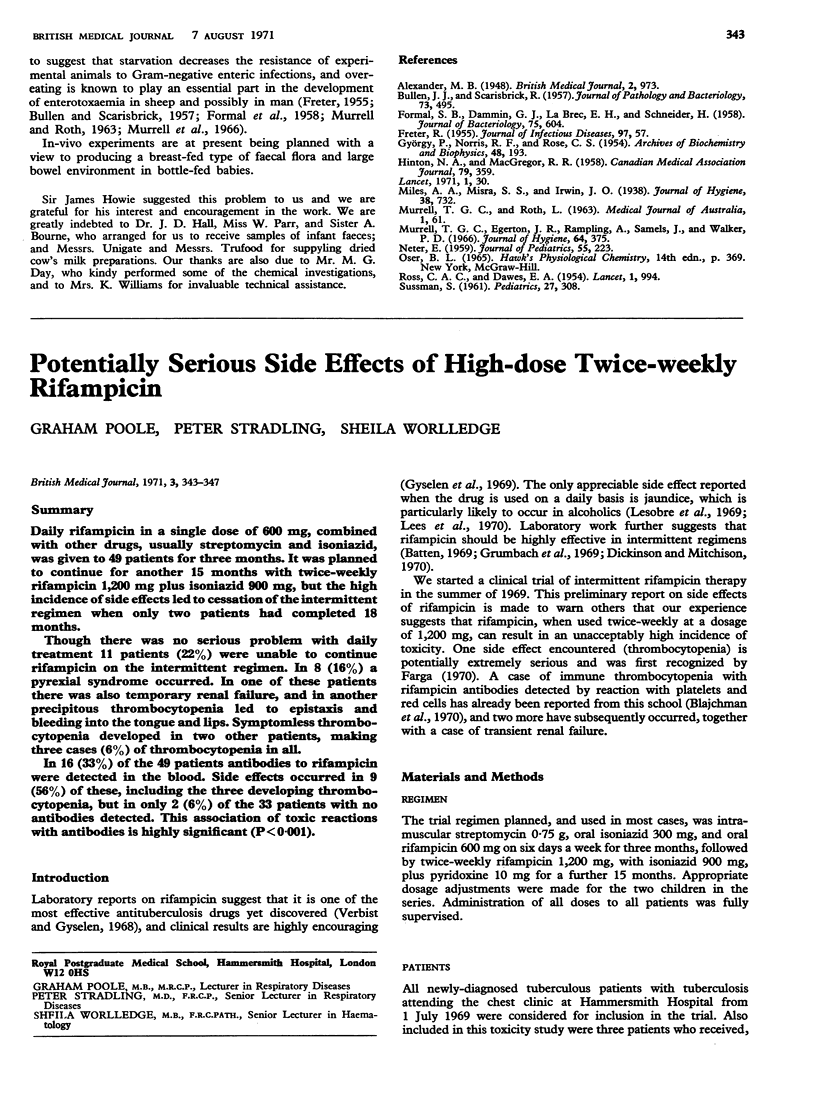
Selected References
These references are in PubMed. This may not be the complete list of references from this article.
- ALEXANDER M. B. Infantile diarrhoea and vomiting; a review of 456 infants treated in a hospital unit for enteritis. Br Med J. 1948 Dec 4;2(4587):973–978. doi: 10.1136/bmj.2.4587.973. [DOI] [PMC free article] [PubMed] [Google Scholar]
- FORMAL S. B., DAMMIN G. J., LABREC E. H., SCHNEIDER H. Experimental Shigella infections: characteristics of a fatal infection produced in guinea pigs. J Bacteriol. 1958 May;75(5):604–610. doi: 10.1128/jb.75.5.604-610.1958. [DOI] [PMC free article] [PubMed] [Google Scholar]
- FRETER R. The fatal enteric cholera infection in the guinea pig, achieved by inhibition of normal enteric flora. J Infect Dis. 1955 Jul-Aug;97(1):57–65. doi: 10.1093/infdis/97.1.57. [DOI] [PubMed] [Google Scholar]
- GYORGY P., NORRIS R. F., ROSE C. S. Bifidus factor. I. A variant of Lactobacillus bifidus requiring a special growth factor. Arch Biochem Biophys. 1954 Jan;48(1):193–201. doi: 10.1016/0003-9861(54)90323-9. [DOI] [PubMed] [Google Scholar]
- HINTON N. A., MACGREGOR R. R. A study of infections due to pathogenic serogroups of Escherichia coli. Can Med Assoc J. 1958 Sep 1;79(5):359–364. [PMC free article] [PubMed] [Google Scholar]
- MURRELL T. G., ROTH L. Necrotizing jejunitis: a newly discovered disease in the highlands of New Guinea. Med J Aust. 1963 Jan 19;50(1):61–69. doi: 10.5694/j.1326-5377.1963.tb27120.x. [DOI] [PubMed] [Google Scholar]
- Murrell T. G., Egerton J. R., Rampling A., Samels J., Walker P. D. The ecology and epidemiology of the pig-bel syndrome in man in New Guinea. J Hyg (Lond) 1966 Sep;64(3):375–396. doi: 10.1017/s0022172400040663. [DOI] [PMC free article] [PubMed] [Google Scholar]
- NETER E. Enteritis due to enteropathogenic Escherichia coli; present-day status and unsolved problems. J Pediatr. 1959 Aug;55(2):223–239. doi: 10.1016/s0022-3476(59)80091-3. [DOI] [PubMed] [Google Scholar]
- ROSS C. A., DAWES E. A. Resistance of the breast-fed infant to gastro-enteritis. Lancet. 1954 May 15;266(6820):994–998. doi: 10.1016/s0140-6736(54)92395-8. [DOI] [PubMed] [Google Scholar]


